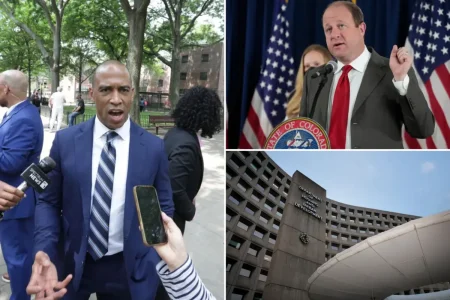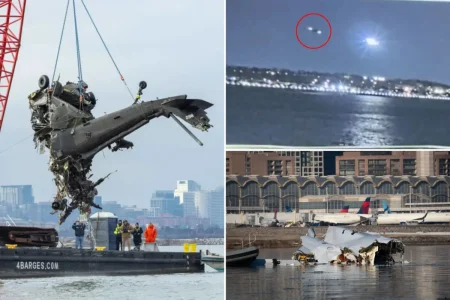Ukraine’s Zelensky Faces Critical Crossroads as US-Russian Peace Proposal Emerges
Diplomatic Pressure Mounts as 28-Point Plan Puts Kyiv in Difficult Position
In the marble halls of Kyiv’s presidential administration building, President Volodymyr Zelensky pores over documents that may determine Ukraine’s fate for generations to come. After more than two years of brutal conflict that has claimed tens of thousands of lives and displaced millions, the Ukrainian leader now finds himself at a precarious diplomatic crossroads. A 28-point peace proposal, carefully crafted by American and Russian diplomats through months of behind-the-scenes negotiations, has landed on his desk – presenting Zelensky with perhaps the most consequential decision of his presidency and potentially forcing Ukraine to make painful concessions that seemed unimaginable when Russian tanks first rolled across the border in February 2022.
“This is an extraordinarily difficult moment for President Zelensky and for Ukraine,” says Dr. Alexandra Vacroux, Executive Director of the Davis Center for Russian and Eurasian Studies at Harvard University. “The political reality is that Ukraine’s options are narrowing as battlefield momentum stalls and Western support shows signs of fatigue. This proposal represents both an opportunity to end the devastating conflict and a potential compromise on Ukraine’s core sovereignty demands.” The proposal, which has not been made public in full, reportedly addresses territorial boundaries, security guarantees, and a phased approach to ending hostilities – with significant concessions required from both sides. For Ukraine, sources familiar with the document indicate it may involve relinquishing claims to certain occupied territories, at least temporarily, in exchange for security guarantees that fall short of immediate NATO membership.
Western Support Shows Signs of Strain as War Fatigue Sets In
The timing of this diplomatic initiative comes as Ukraine faces mounting challenges both on and off the battlefield. Western military aid, while substantial, has become increasingly politicized in key supporting nations, particularly the United States where election-year politics have complicated funding approvals. “We’re witnessing a gradual erosion of the united front that characterized the initial Western response to Russia’s invasion,” explains Dr. Michael Kimmage, professor of history at Catholic University and former State Department official. “Aid packages that once moved swiftly through legislative bodies now face scrutiny and delays, creating real constraints on Ukraine’s military capabilities.” This war fatigue coincides with Russia’s willingness to absorb enormous losses in pursuit of incremental gains along the eastern front, where Ukrainian forces – despite showing remarkable resilience – have struggled to maintain defensive lines amid ammunition shortages and manpower challenges.
Recent polling across Europe and North America reveals a subtle but significant shift in public sentiment, with support for “backing Ukraine for as long as it takes” declining as economic pressures at home mount and the conflict becomes increasingly normalized in media coverage. “The rallying cry of the conflict’s early days has given way to a more complex calculus of interests,” notes Emma Ashford, senior fellow at the Stimson Center. “Western leaders must balance their principled support for Ukraine against domestic political realities and competing global priorities.” This evolving landscape has created the diplomatic opening now being exploited by American and Russian envoys, who have crafted a proposal that reflects the current military stalemate and the political realities in key capitals – realities that increasingly favor compromise over continued conflict.
Inside the 28-Point Proposal: Sovereignty, Security, and Painful Compromises
The substance of the 28-point proposal represents months of painstaking diplomatic work between American and Russian representatives, with input from European allies but notably limited direct participation from Ukraine itself – a fact that has generated considerable resentment in Kyiv. According to diplomatic sources familiar with the document, it establishes a framework for a phased ceasefire, withdrawal of forces from certain contested areas, and an international security arrangement designed to protect Ukraine from future aggression while addressing Russia’s stated security concerns regarding NATO expansion. “The proposal attempts to thread an extraordinarily difficult needle,” explains Ambassador William Taylor, former U.S. Ambassador to Ukraine. “It acknowledges the reality on the ground while providing Ukraine with a pathway to enhanced security, albeit one that falls short of Zelensky’s maximalist goals.”
Critical points reportedly include provisions for internationally monitored referendums in disputed territories after a cooling-off period of several years, limitations on Ukraine’s military posture, economic reconstruction packages funded primarily by Western governments, and a gradual lifting of sanctions on Russia contingent on compliance with withdrawal timelines. “What makes this proposal particularly challenging for Zelensky is that it requires immediate, concrete concessions from Ukraine in exchange for promises of future security arrangements,” notes Dr. Fiona Hill, former National Security Council senior director for European and Russian affairs. “Given Russia’s history of disregarding international agreements, there’s understandable skepticism in Kyiv about trading territory for paper guarantees.” The proposal also reportedly includes controversial provisions regarding Ukraine’s linguistic and cultural policies – areas that many in Ukraine view as sovereign domestic matters beyond the legitimate scope of peace negotiations.
Domestic Political Calculations Complicate Zelensky’s Decision
President Zelensky’s response to the proposal is complicated by shifting domestic political dynamics within Ukraine itself. Once enjoying approval ratings above 90% in the war’s early phases, recent polls show his support, while still strong, has softened as war weariness affects Ukrainian society. “There’s a growing tension between those who insist that not an inch of territory can be surrendered and those who privately question how much more suffering the country can endure,” explains Oleksiy Melnyk, co-director for foreign policy at the Razumkov Centre in Kyiv. “Zelensky must navigate between these perspectives, knowing that any agreement perceived as capitulation could spark significant domestic backlash.” Military commanders and nationalist factions have publicly stated their opposition to territorial concessions, while some civil society leaders have begun cautiously arguing that securing Ukraine’s future might require painful compromises in the present.
Complicating matters further is the constitutional requirement for any territorial changes to be approved by national referendum – a procedural hurdle that could prove insurmountable given public sentiment against ceding land to Russia. “Zelensky is caught between international diplomatic pressure and domestic political constraints,” notes Maria Zolkina, political analyst at the Democratic Initiatives Foundation. “Any decision he makes carries enormous political risk – accepting the proposal could be portrayed as betrayal, while rejecting it could lead to diminished Western support at a critical moment.” The president has maintained public ambiguity regarding his position on the proposal while engaging in intensive consultations with military leaders, parliamentary factions, and civil society representatives – a process that reflects both the democratic values Ukraine is fighting to defend and the profound consequences of the choices now facing its leadership.
The Geopolitical Chess Game: Regional Implications and Global Stakes
The outcome of this diplomatic initiative carries implications far beyond Ukraine’s borders, potentially reshaping European security architecture and influencing global perceptions of Western resolve. “This negotiation represents a pivotal moment in the post-Cold War international order,” asserts Ian Bremmer, president of the Eurasia Group. “How it resolves will send signals about the costs of aggression, the value of security guarantees, and the sustainability of collective defense arrangements.” NATO members, particularly those on the alliance’s eastern flank, are watching nervously – concerned that any settlement that appears to reward Russia’s aggression could embolden similar actions elsewhere. Meanwhile, China observes the proceedings with strategic interest, potentially drawing lessons relevant to its own territorial ambitions.
For Ukraine, the decision ahead represents an existential crossroads that will shape the nation’s development for generations. “Ukraine is fighting not just for territory but for its very identity as a sovereign, democratic European state,” emphasizes Anne Applebaum, historian and journalist who has closely chronicled Ukraine’s struggle. “Any settlement must be evaluated not just in terms of immediate security gains or territorial adjustments, but in how it positions Ukraine for long-term resilience and development.” As President Zelensky weighs the contents of the 28-point proposal against his nation’s aspirations and the harsh realities of a war entering its third year, he carries the weight of history on his shoulders. The decisions made in Kyiv in the coming weeks may well determine whether Ukraine emerges from this conflict with its sovereignty intact and its future secure, or whether the country faces decades of contested status and continued vulnerability to its larger neighbor. For a nation that has already sacrificed so much in defense of its independence, the stakes could not be higher.









